FASD, Autism and neurological challenges
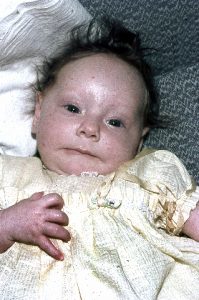 If you think FASD is not relevant to ‘good mothers‘ of children with autism, take this in:
If you think FASD is not relevant to ‘good mothers‘ of children with autism, take this in:
-
It has been found that no level of alcohol is safe during pregnancy. Up to 50% of women are drinking alcohol in the first weeks before they realise they are pregnant and commonly many doctors are still suggesting they can drink up to a glass of wine a day.
-
Binge drinking impact on father’s sperm has also been implicated in FASD.
-
80% of those with FASD will ultimately be diagnosed on the autism spectrum.
-
If the mother has no public record of her drinking, most pediatricians will never suspect and the child themselves will almost never know they have FASD.
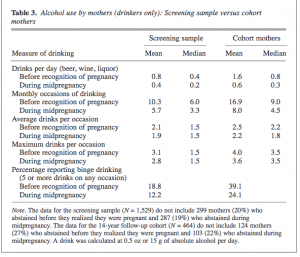
I was diagnosed with autism at the age of 2 and a half in a 3 day inpatient hospital assessment in 1965. I was born to an attachment disordered alcoholic (who, herself was a child of alcoholic parents) and a binge drinking father (born to a ‘dipso’, probably ‘autistic’, mother). Though only 30% of children with FASD/ARND have the facial features of FAS, I had some degree of the facial features of FAS.Â
She had also attempted twice to abort me unsuccessfully and though I had some wonderful carers before the age of 4 and a half, I was also left in her care where I was severely abused on a variety of levels. This included being given gin and Valium in my bottles before the age of 4 and repeated suffocation abuse.
I was stuck in chronic fight-flight, was developmentally delayed, behaviorally derailed, was sleep disordered, had visual perceptual impairments, a turned eye and convergence insufficiency, sensory processing issues, dyspraxia/dyslexia/dyscalculia issues, significant cognitive challenges (impacting attention, auditory memory, executive functioning, impulse control, emotional regulation, internal mentalising, tracking, retention, transferability, ability to simultaneously process self and other), a severe language processing disorder, was echolalic to age 9-11, and finally acquired functional speech after that. I was progressively managed for mood, anxiety and compulsive disorders and after that for PTSD.
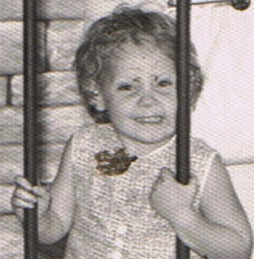 Like my substance abusing parents, I fell into the same substance abuse patterns as a suicidal homeless teenager between the ages of 12-17.  I was not assessable by my fourth secondary school by age 15, had 30 jobs in 3 years from 15-18 years old, (with the help of a social worker and psychiatrist) returned to education as a semi illiterate and innumerate adult and was found at age 27 (with an honours degree and doing a Dip Ed) to have an IQ in the mildly mentally retarded range, just under 70.
Like my substance abusing parents, I fell into the same substance abuse patterns as a suicidal homeless teenager between the ages of 12-17.  I was not assessable by my fourth secondary school by age 15, had 30 jobs in 3 years from 15-18 years old, (with the help of a social worker and psychiatrist) returned to education as a semi illiterate and innumerate adult and was found at age 27 (with an honours degree and doing a Dip Ed) to have an IQ in the mildly mentally retarded range, just under 70.
I also had significant health challenges from early which included repeated respiratory tract infections, food intolerance, food allergies, IgA and IgG2 deficiencies and fluctuating neutropenia as well as a genetic collagen disorder, Ehlers Danlos Syndrome type 4 (EDSIV)
Neurologically, I showed signs of an impaired respiratory drive since age 2-3, had significant autonomic challenges with constipation, circulatory anomalies, temperature dysregulation, little/no sense of hunger, thirst, pain, danger or my own limitations. I was immersed early in dance, in swimming, later formally in daily brain gym. As an adult I got remedial help, counselling, social support, some good peer and community mentoring. The challenges decreased and I advanced a lot.
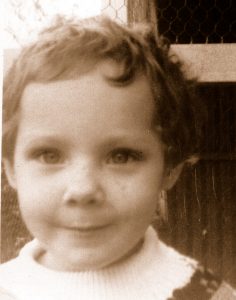 In adulthood I had sudden vision loss in one eye for 3 months. My respiratory drive failed further following a 7 month respiratory infection aged 46 and one of my legs began collapsing upon load bearing. The respiratory drive failed further again with chemo and operations for breast cancer. Also during chemo I had extreme autonomic dysfunction which was ascertained as pre-existing and exacerbated by the chemo. Following chemo I went on to ASV ventilation for a failed respiratory drive, developed sleep fragmentation and associated hypersomnia, then sensory neuropathy with more of the nerve-muscle signalling challenges upon load bearing. Within the next two years came sudden onset binocular diplopia, severe muscle stiffness and spasms, urinary dysfunction and foot drop.  These appeared to be regulation and signalling issues. I was tested for LO-CCHS, Sjorgrens, Lupus, Myesthenia Gravis and MS – all negative. Neurological testing found soft signs (positive for Romberg’s, Dysdiadochokinesia). However, repeated brain MRIs all normal.
In adulthood I had sudden vision loss in one eye for 3 months. My respiratory drive failed further following a 7 month respiratory infection aged 46 and one of my legs began collapsing upon load bearing. The respiratory drive failed further again with chemo and operations for breast cancer. Also during chemo I had extreme autonomic dysfunction which was ascertained as pre-existing and exacerbated by the chemo. Following chemo I went on to ASV ventilation for a failed respiratory drive, developed sleep fragmentation and associated hypersomnia, then sensory neuropathy with more of the nerve-muscle signalling challenges upon load bearing. Within the next two years came sudden onset binocular diplopia, severe muscle stiffness and spasms, urinary dysfunction and foot drop.  These appeared to be regulation and signalling issues. I was tested for LO-CCHS, Sjorgrens, Lupus, Myesthenia Gravis and MS – all negative. Neurological testing found soft signs (positive for Romberg’s, Dysdiadochokinesia). However, repeated brain MRIs all normal.
Whilst EDSIV comes with muscular-skeletal, vascular, and autonomic issues and collagen related brain connectivity and immune regulation challenges, it did not account for this collection. In the end, I wondered if my neurological challenges were just part of how a FASD brain ages, that this usually rather alarming collection was simply my ‘normal‘. Though FAS was first studied in the 1970s, broadening of FAS into the spectrum of FASD only happened in 1999/2000 and even then there is still very very scarce literature on what happens physically and neurologically to those with FASD as adults.
There is growing literature on the co-occurrence of autism in those with FASD with up to 80% of those with FASD diagnosed on the autism spectrum and the majority diagnosed with attention deficits. Whilst those with FAS commonly have structural anomalies on a brain MRI, this is less so with those with FASD/ARND.  Nevertheless, my brain MRIs were to look for things like brain tumors and MS, not FASD. If FASD related structural differences may only be found in comparison with control groups, could such brain MRIs have missed the signs of FASD? Perhaps this explains why:
“The brain images to be used in the FASD study are standard MR images, the same as those commonly used to diagnose brain tumors. The key is in the detailed quantitative analysis, which is different from the clinical reading routinely performed by neuroradiologists. “Radiologists are tuned in to finding areas where there is disease and to finding global measures of volume loss,” says Dr. David Haynor, associate professor of radiology, who is in charge of the MRI portion of the study. “Radiologists are not prepared to analyze dozens of features which may be just subtly quantitatively abnormal. They simply can’t do that reliably. That’s probably why a lot of these clinically read MRIs are normal, because they may be within the gross range of normal, which is a considerable range.”
“Although the effects of brain damage caused by prenatal exposure to alcohol are plain, their relationship to specific physical anomalies in the brain is not so clear. Many animal studies have demonstrated structural and functional brain impairment as a result of prenatal exposure to alcohol. But, in people with FAS, typical clinical readings of magnetic resonance imaging (MRI) have usually failed to localize brain features that may be only slightly abnormal, yet result in behavior that is clearly the result of brain damage. “
I wrote to a number of international specialists, researchers and authors in the FASD field on the subject of normal MRI with ongoing neurological issues. This was their feedback:
A normal MRI does not necessarily mean the brain was formed normally as there may be some subtle but meaningful deficits in brain structure that may not show up on an MRI. It does however mean that the gross or large parts of the brain are likely in place. It is my understanding that in people who have had extensive fetal alcohol brain damage are missing a corpus callosum which is a structure in the brain that transmits information from one side of the cerebrum to the other but that damage may also be moderate with stippling of the surface of that structure or there may not be any apparent damage at all.
Carl C. Bell, M.D.
Clinical Psychiatrist Emeritus,
Department of Psychiatry, School of Medicine,
University of Illinois at ChicagoI am not an expert in MRI’s however, it is my understanding that in some severe cases of FASD there are brain differences that do show up on an MRI. However, most individuals who have been prenatally exposed to alcohol have very cellular damage to the brain depending on the timing and frequency of the mothers alcohol intake – so these do NOT present in an MRI. It is my understanding that much work is occurring with PET SCANS which are the functional MRI’s and these are showing very interesting results for individuals with FASD.
Audrey McFarlane
Executive Director
Lakeland Centre for FASD
www.lcfasd.comNo you do not always see big changes on a scan but that does not mean that nerve cells always work properly. Some people have changes others do not. Either way you could still have fasd.
Raja Mukherjee
Consultant Psychiatrist
Surrey and Borders NHS Foundation Trust
Adult ASD/ FASD
www.fasdclinic.com
http://www.researchgate.net/pr…/Raja_Mukherjee/publications/
Even in full-blown FAS, conventional brain MRI studies are usually read as normal by clinical radiologists. The many studies that identify abnormalities are looking at techniques not commonly used in clinical imaging and are comparing groups with FAS to groups without. I did glance at your very detailed biography. You might be interested in a recent paper in the Lancet that identified a high prevalence of infections in individuals with FASD. A large, informal study of adults with FAS also identified a high prevalence of immune disorders, a finding that would be predicted from animal models.Michael E. Charness, M.D.
Faculty Associate Dean
Professor of Neurology,
Harvard Medical School
The brain changes in those with an FASD are generally not found on clinical MRI’s (about 85% of the time the images are normal and the people are not!). In animal models the abnormalities which are also not seen on MRI’s are present at microscopic levels when the brains can be physically removed. Research imaging can show these kinds of abnormalities, but that is not typically done except in research studies. The better way to “see” the trouble is with a battery of neuropsychological testings which show the functional problems, relate it to brain structure and help tell you what extra kinds of help you might need too.ÂSterling Clarren, MD
Professor of Pediatrics at University of Washington School of MedicineÂdoctor for the university’s FAS diagnostic and prevention clinic prior to becoming the CEO and Scientific Director of the Canada FASD Research Network.
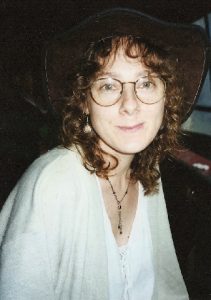 I have online images of my most recent brain MRI and would be happy to hear from any neurologists researching the relationship between autism and FASD who would like to view the MRI from this context. I would like to solve the mystery for myself, for others who developed significant complications in adulthood, and for what knowledge it may bring to those in the autism world who have FASD presenting and diagnosed as having ASD.
I have online images of my most recent brain MRI and would be happy to hear from any neurologists researching the relationship between autism and FASD who would like to view the MRI from this context. I would like to solve the mystery for myself, for others who developed significant complications in adulthood, and for what knowledge it may bring to those in the autism world who have FASD presenting and diagnosed as having ASD.
Cerebellar abnormalities are common in those with FASD, yet these may be so ‘near normal’ they are not noted in a brain MRI. However, Temple Grandin, who was initially diagnosed as brain injured at age 3 had an MRI in recent years as an adult which did show cerebellar abnormalities and neurological soft signs indicating mild brain injury. She wrote:
” In my own case an MRI scan revealed cerebellar abnormalities. I am unable to tandem walk (the standard “walk the line” test done by the police for drunken drivers). I end up toppling sideways, but my reactions are normal for other simple motor tests of cerebellar dysfunction.” Â
source: https://www.autism.com/advocacy_grandin
What would happen to autism awareness if two of the worlds most well known people with autism and authors on the subjects, were also people with FASD? Hopefully, we could continue to celebrate our achievements as human beings without being reduced to the sum total of mild brain injury.
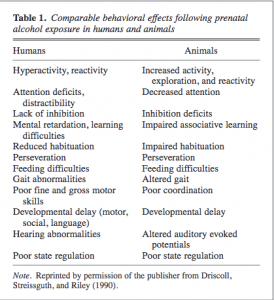
Sincerely,
Polly Samuel (aka ‘Donna Williams’)
Polly Samuel (aka 'Donna Williams') Author, artist, consultant and presenter. http://www.donnawilliams.net I acknowledge Aboriginal and Torres Strait Islander people as the Traditional Owners of this country throughout Australia, and their connection to land and community.

[…] FASD, Autism and neurological challenges […]